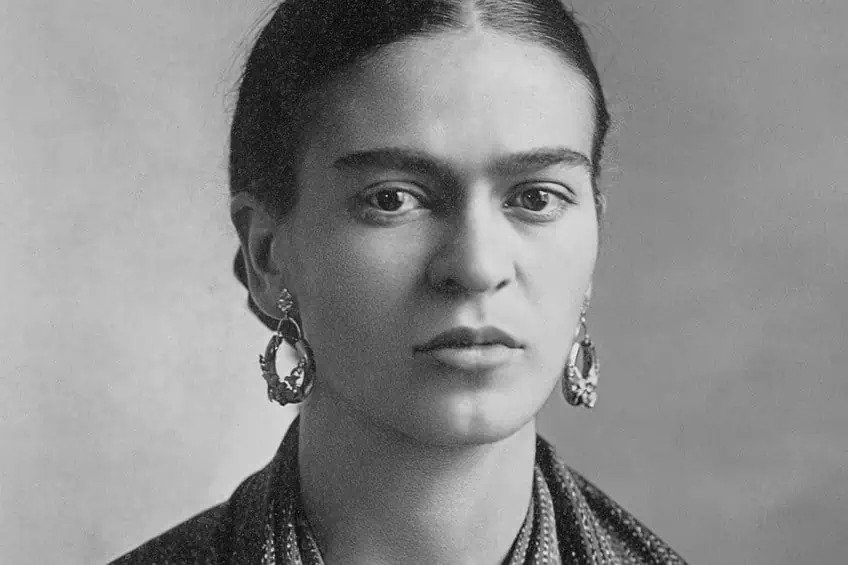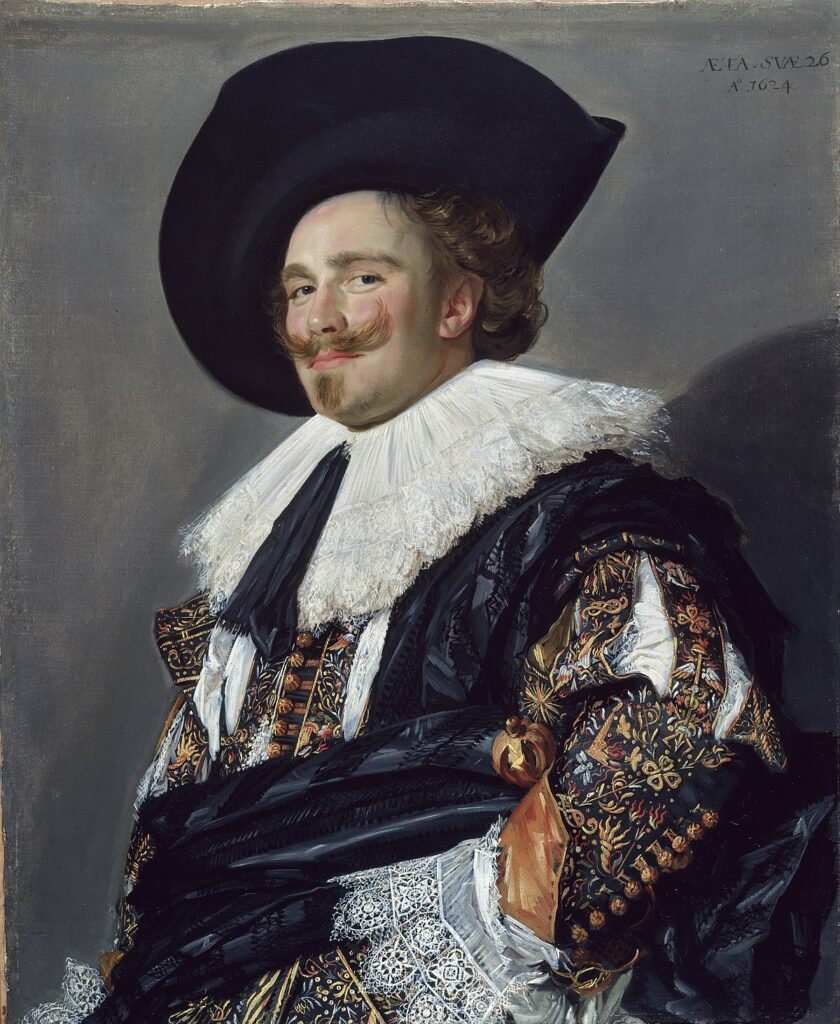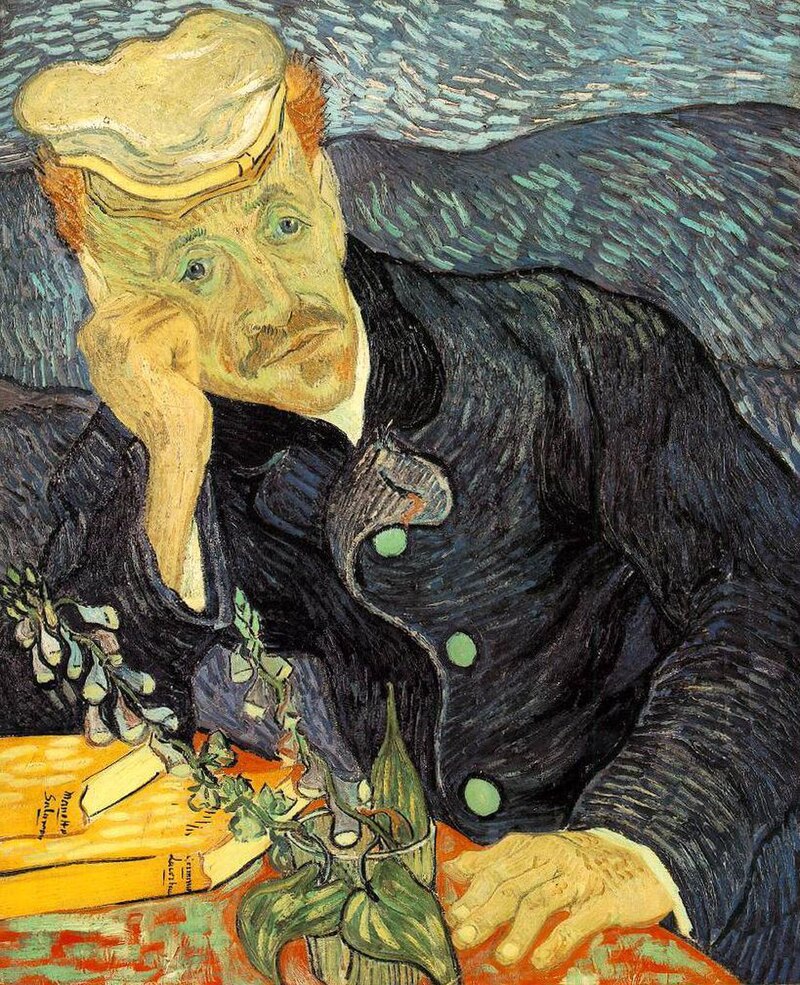Art has the power to transcend time, culture, and emotion. Portraits have a unique way of capturing the essence of their subjects. In this exhilarating journey through art history, we’ll explore the famous portraits that have left an indelible mark on the canvas of creativity. Buckle up for a ride filled with intrigue, enigma, and a splash of fun as we delve into the stories behind each masterpiece.
1. Mona Lisa by Leonardo da Vinci

| Completed Year | 1506 |
| Dimensions | 30 in × 20 7/8 in (77 cm × 53 cm) |
| Location | Louvre Museum, Paris, France |
Our journey begins with the grand dame of all portraits – the Mona Lisa. Crafted by the genius Leonardo da Vinci between 1503 and 1506, this painting is shrouded in mystery and has sparked countless debates and conspiracy theories. Some believe that da Vinci used his own face as a model for Mona Lisa’s enigmatic expression.
Interesting Fact: Did you know that the subject’s smile seems to change depending on where you stand?
2. Girl with a Pearl Earring by Johannes Vermeer

| Completed Year | 1665 |
| Dimensions | 17.5 in × 15.4 in (44.5 cm × 39 cm) |
| Location | Mauritshuis, The Hague, Netherlands |
Johannes Vermeer’s “Girl with a Pearl Earring” is a testament to the Dutch master’s ability to capture light and emotion. Painted around 1665, the subject’s beguiling gaze and the play of light on the pearl have captivated art enthusiasts for centuries.
Interesting Fact: Rumor has it that the girl in the painting might have been a servant in Vermeer’s household. Who knew household help could be so iconic?
3. Portrait of Adele Bloch-Bauer I by Gustav Klimt

| Completed Year | 1907 |
| Dimensions | 54 in × 54 in (138 cm × 138 cm) |
| Location | Neue Galerie, New York, USA |
Gustav Klimt’s golden touch is evident in the mesmerizing “Portrait of Adele Bloch-Bauer I” (1907). Adorned with gold leaf and intricate patterns, Klimt’s masterpiece is a celebration of art nouveau.
Interesting Fact: It took nearly seven decades for the portrait to return to its rightful heirs after being confiscated during World War II.
4. Whistler’s Mother by James McNeill Whistler

| Completed Year | 1871 |
| Dimensions | 56 in × 64 1/4 in (142.3 cm × 163.2 cm) |
| Location | Musée d’Orsay, Paris, France |
James McNeill Whistler’s “Arrangement in Grey and Black No. 1,” more commonly known as “Whistler’s Mother” (1871), is a serene depiction of maternal love.
Interesting Fact: There is a rumor that Whistler’s mother posed for the portrait when the intended model failed to show up. An impromptu masterpiece? Sounds like every artist’s dream!
5. The Scream by Edvard Munch

| Completed Year | 1893 |
| Dimensions | 36 in × 28 7/8 in (91 cm × 73.5 cm) |
| Location | National Gallery, Oslo, Norway |
Edvard Munch’s “The Scream” (1893) is not your average portrait. This iconic artwork is an expressionist masterpiece that captures the raw emotion of existential dread.
Interesting Fact: Munch created multiple versions of “The Scream,” including a lithograph that fetched a cool 19.9 million at an auction. Now that’s a scream-worthy price tag!
6. Self-Portrait with Cropped Hair by Frida Kahlo

| Completed Year | 1940 |
| Dimensions | 15 3/4 in × 11 in (40 cm × 27.9 cm) |
| Location | Private Collection |
Frida Kahlo, the queen of unapologetic self-expression, takes the stage with “Self-Portrait with Cropped Hair” (1940). Kahlo, known for her bold style and unibrow, painted this self-portrait after divorcing Diego Rivera. In a playful defiance of gender norms, she rocks a suit and cropped hair, making a bold statement about identity and independence.
7. American Gothic by Grant Wood

| Completed Year | 1930 |
| Dimensions | 30 in × 25 in (76.2 cm × 63.5 cm) |
| Location | Art Institute of Chicago, Chicago, USA |
Grant Wood’s “American Gothic” (1930) is the embodiment of Midwestern stoicism. Featuring a stern-faced farmer and his daughter, this portrait has been the subject of countless parodies and adaptations.
Interesting Fact: Did you know that the models for the painting were Wood’s sister and his dentist?
8. The Arnolfini Portrait by Jan van Eyck

| Completed Year | 1434 |
| Dimensions | 32 in × 23.6 in (82 cm × 60 cm) |
| Location | National Gallery, London, UK |
Traveling back to the Northern Renaissance, we encounter Jan van Eyck’s “The Arnolfini Portrait” (1434). This artwork is not just a simple wedding portrait; it’s a symphony of symbolism.
Interesting Fact: The convex mirror in the background reflects two additional figures, possibly witnesses to the marriage.
9. Portrait of Dora Maar by Pablo Picasso

| Completed Year | 1937 |
| Dimensions | 28 3/4 in × 23 5/8 in (73 cm × 60 cm) |
| Location | Musée Picasso, Paris, France |
Pablo Picasso, the maestro of cubism, brings us “Portrait of Dora Maar” (1937). Maar, a photographer and Picasso’s lover, is depicted in a fragmented and distorted style characteristic of cubist art. Picasso once said, “Art is the lie that enables us to realize the truth.” Now that’s a mind-bending truth bomb!
10. Napoleon Crossing the Alps by Jacques-Louis David

| Completed Year | 1801 |
| Dimensions | 102 in × 87 in (260 cm × 221 cm) |
| Location | Château de Malmaison, Rueil-Malmaison, France |
Jacques-Louis David’s “Napoleon Crossing the Alps” (1801) is a grandiose depiction of the French leader on horseback. But here’s an interesting fact: the crossing of the Alps was more of a strategic move than a daring adventure. Napoleon actually crossed the Alps on a mule, not a majestic steed.
11. The Laughing Cavalier by Frans Hals

| Completed Year | 1624 |
| Dimensions | 33.3 in × 26.8 in (84.5 cm × 68 cm) |
| Location | Wallace Collection, London, UK |
Frans Hals injects a dose of mirth into our lineup with “The Laughing Cavalier” (1624). This lively portrait captures the exuberance of the Dutch Golden Age. The subject’s infectious laughter and flamboyant attire make this painting a joyful celebration of life. It’s almost like Hals painted the 17th-century version of a good belly laugh!
12. Portrait of Dr. Gachet by Vincent van Gogh

| Completed Year | 1890 |
| Dimensions | 25.5 in × 21 in (64.8 cm × 53.3 cm) |
| Location | Musée d’Orsay, Paris, France |
Our artistic odyssey concludes with Vincent van Gogh’s “Portrait of Dr. Gachet” (1890). This poignant portrait of the artist’s physician reflects van Gogh’s emotional turbulence during his final months.
Interesting Fact: There are two versions of this portrait, one showing Dr. Gachet with a pipe and the other without. It’s almost like a choose-your-own-ending story in paint!
Frequently Asked Questions
What is the most famous portrait in the world?
Mona Lisa is the famous portrait of all time. It shouldn’t be a surprise that the most well-known painting in the entire world depicts the enigmatic woman with the captivating smile.
Which artist is known for portraits?
Rembrandt van Rijn, a Dutch painter from the 17th century, is arguably the best master of group portraiture, and Frida Kahlo, a Mexican painter from the 20th century, is the most well-known painter of self-portraiture.
Why is self-portrait famous?
The self-portrait concentrates on the artist, who frequently has their eyes locked on the audience. It’s a bold art that calls for the creator to consider themselves as a subject and place their body in the canon.
Conclusion
In this whirlwind tour through the annals of art history, we’ve encountered the sublime, the mysterious, and the downright quirky. These famous portraits not only inspire with their artistic brilliance but also invite us to explore the rich tapestry of stories behind the strokes of the brush. So, whether you’re an art connoisseur or just someone with a penchant for the peculiar, let these portraits be your muse on the colorful canvas of creativity. Happy painting!













